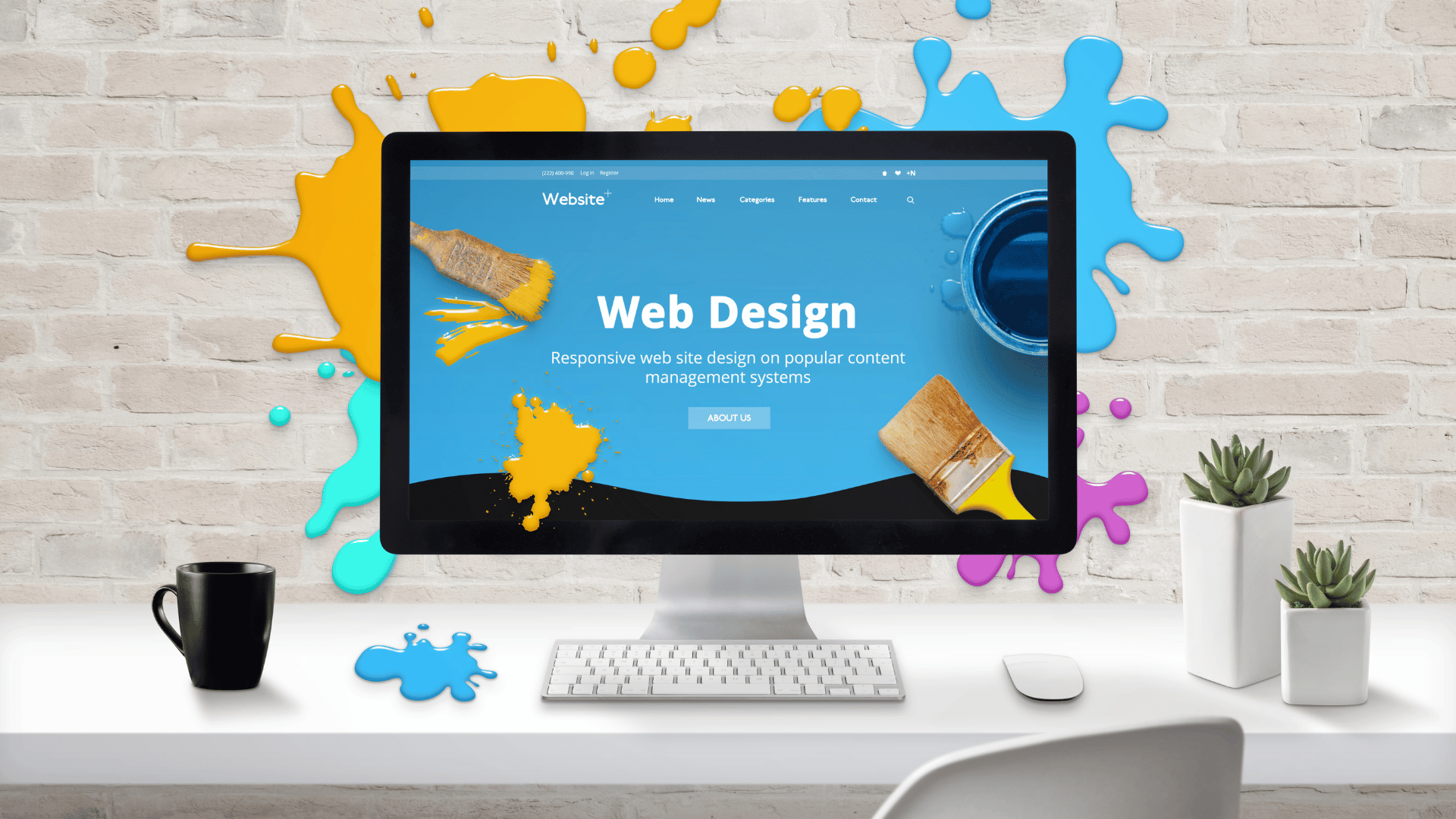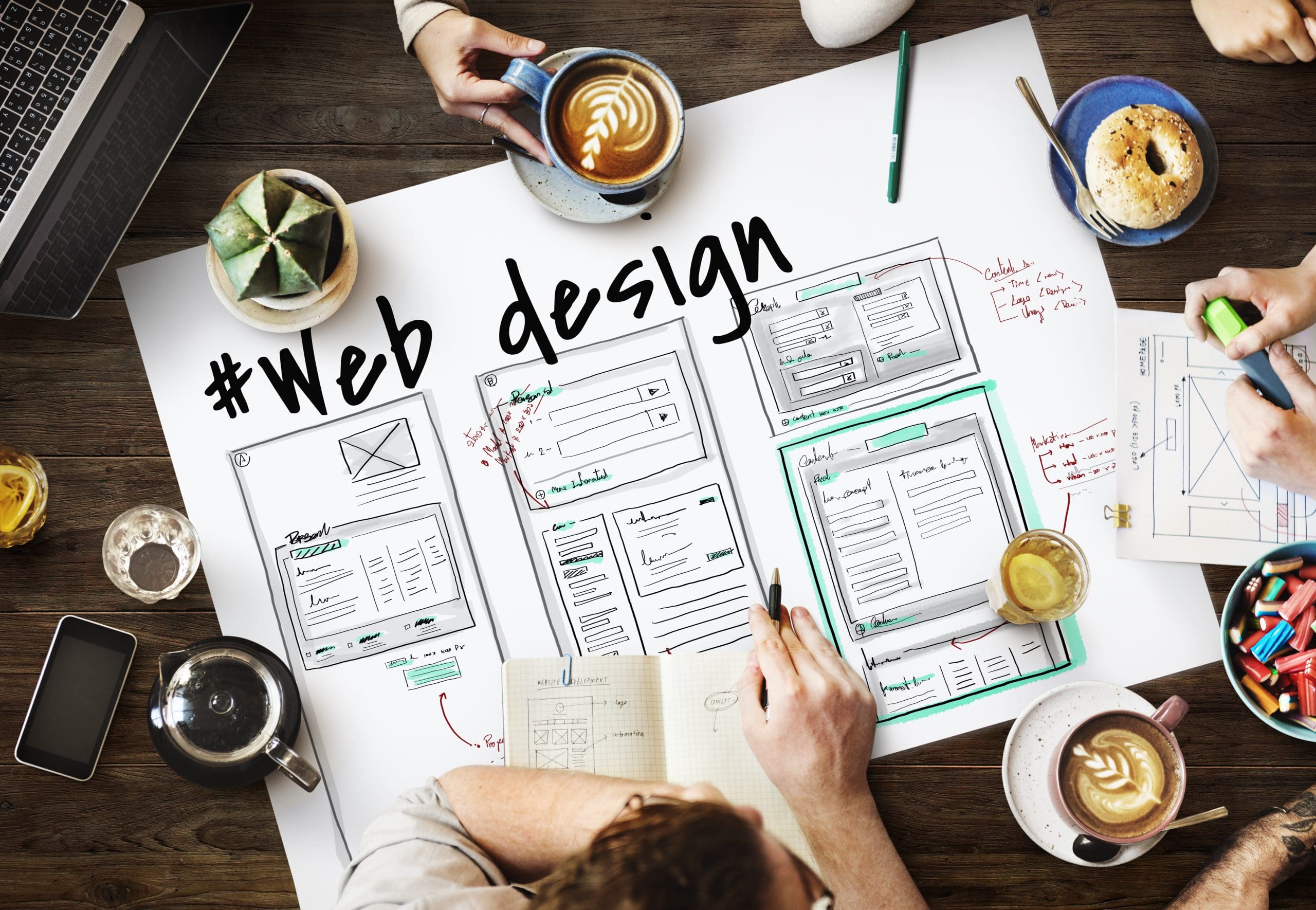The future of website innovation: what every web design company needs to know
The Value of User Experience in Effective Web Design Approaches
User experience (UX) works as a foundation in effective web design approaches. It forms just how customers interact with a site, influencing their satisfaction and probability of returning. A properly designed UX can improve involvement via instinctive navigation and responsive formats. Nevertheless, forgeting these facets may bring about stress and increased bounce rates. Understanding the details of UX is necessary for designers intending to produce engaging electronic experiences that resonate with varied audiences. What variables genuinely drive successful user engagement?
Comprehending User Experience and Its Influence On Layout
Although user experience (UX) is commonly regarded as a plain aspect of web design, it fundamentally shapes how individuals interact with a web site. UX includes all elements of the user's interaction, including use, accessibility, and general complete satisfaction. A favorable UX fosters interaction, motivating users to explore the website and return in the future. On the other hand, an adverse experience can lead to irritation, causing high bounce rates and shed opportunities for conversion.
Layout components like web content, navigation, and format organization play essential duties fit this experience. Effective UX design prepares for user needs and choices, guaranteeing that info is aesthetically enticing and quickly accessible. Furthermore, comprehending user habits with analytics can supply useful understandings, informing design choices that boost usability. Inevitably, a detailed understanding of UX permits developers to produce web sites that not only attract users yet also promote meaningful communications that straighten with business goals and user assumptions.
Trick Principles of Reliable User Experience
Effective user experience rests on several crucial concepts that boost web site performance and engagement. Intuitive navigating style, receptive design essentials, and the significance of aesthetic hierarchy are essential aspects that add to a seamless interaction in between users and internet content. Recognizing these principles allows designers to create even more user-friendly and obtainable digital atmospheres.
Intuitive Navigation Design
When customers encounter a web site, user-friendly navigating design functions as a vital portal to their overall experience. Effective navigating permits users to easily situate the information they seek, boosting their interaction with the site. Key principles consist of clear labeling, sensible company, and consistent positioning of navigating elements. Tags need to be uncomplicated, allowing customers to predict the material they will discover. A well-structured power structure aids users recognize the partnership between different sections, assisting them with the web site effortlessly. Furthermore, responsive food selections and quickly available web links add to a fluid experience across gadgets. By focusing on instinctive navigating, designers can substantially lower user disappointment and boost interaction, eventually fostering a favorable assumption of the website and its content.
Receptive Format Basics
A well-structured navigating system naturally causes the demand for a responsive format, which is important in today's varied electronic landscape. A responsive layout guarantees that websites feature effortlessly throughout different devices, consisting of smart devices, tablet computers, and desktops. This adaptability improves user experience by allowing web content to be conveniently obtainable and visually coherent, no matter screen dimension. Key concepts of responsive layout consist of liquid grids, adaptable photos, and media inquiries, which facilitate ideal viewing. In addition, prioritizing touch-friendly components enhances communication on smart phones. By implementing a responsive layout, developers can accommodate individuals' needs, lessen bounce rates, and boost engagement. Eventually, a well-executed receptive style cultivates a positive user experience, motivating site visitors to discover the website even more.
Visual Pecking Order Value
Aesthetic hierarchy plays a vital function in directing individuals with an internet site, ensuring that essential information captures their attention. By strategically using size, spacing, comparison, and color, developers can produce a clear pathway for customers to adhere to. Larger aspects usually draw the eye, showing their value, while contrasting colors can highlight calls to action. Additionally, constant positioning and group of related content enhance comprehension, making navigating instinctive. Reliable use visual hierarchy not only boosts use yet additionally supports the general aesthetic of the site, cultivating a positive user experience. When customers can quickly determine the most vital information, they are a lot more likely to involve with the content, causing boosted complete satisfaction and interaction with the website.
The Duty of Functionality in Web Design
Functionality plays a vital role in web design, specifically via navigation simpleness and adherence to accessibility criteria. Efficient navigation boosts user fulfillment by enabling site visitors to discover information promptly and with ease. At the same time, conference ease of access standards ensures that all users, despite their abilities, can efficiently communicate with the web site.
Navigation Simplicity
Simplicity in navigation stands as a foundation of reliable web design, significantly affecting user experience. A streamlined navigating system allows individuals to find info rapidly and intuitively, lowering irritation and boosting fulfillment. Clear labeling and rational framework are vital aspects, directing individuals easily with the internet site. Repetitive links or excessively intricate food selections can disorient individuals, causing boosted bounce rates. In addition, mobile responsiveness must be thought about, making certain navigating continues to be straightforward throughout tools. Lessening and focusing on necessary web pages mess better sustains user engagement. Effective navigation not only cultivates a favorable experience yet additionally urges users to explore the site a lot more thoroughly, ultimately causing greater conversion rates. In this regard, navigating simpleness serves as a vital element in the overall performance of web design techniques.
Ease of access Criteria
User interaction is greatly boosted when sites stick to availability criteria, guaranteeing that all individuals, regardless of their abilities, can browse and communicate effectively. continue reading this Compliance with these requirements not only expands the audience but additionally enhances overall user fulfillment. Available layout includes features such as text alternatives for pictures, key-board navigating, and adequate color comparison, which assist in usage by individuals with disabilities. Furthermore, applying these standards can favorably impact search engine optimization (SEO) by improving website framework and quality. As web design progresses, focusing on access ends up being important in cultivating an inclusive electronic environment. By welcoming these requirements, designers add to a more equitable net, ultimately driving user commitment and involvement.
Value of Responsive Style for User Engagement
As customers increasingly accessibility websites with a variety of gadgets, the relevance of responsive design becomes critical for involving individuals properly. Receptive design assurances that an internet site adapts effortlessly to various display dimensions, providing a suitable watching experience no matter of the gadget made use of. This flexibility improves user engagement by assisting in simpler navigation and interaction with web content.
When customers encounter a site that is receptive, they are most likely to remain much longer, explore better, and return in the future. A well-designed responsive layout minimizes the disappointment frequently related to scrolling and zooming on smaller sized screens, thus decreasing bounce prices. In addition, responsive style can positively influence search engine positions, as online search engine prioritize mobile-friendly sites. In today's electronic landscape, where mobile usage remains to rise, carrying out receptive style is not just advantageous, but important for keeping user engagement and ensuring a favorable experience across all devices.
Enhancing Load Times for Better User Satisfaction

To improve lots times, web designers ought to focus on optimizing photos, leveraging web browser caching, and minimizing HTTP demands. In addition, using Content Distribution Networks (CDNs) can speed up material distribution by dispersing it across various geographic locations. Enhancing code, such as compressing CSS and JavaScript data, additionally adds to faster filling speeds.
Eventually, a dedication to boosting load times not only increases user contentment but likewise enhances brand name commitment and boosts the likelihood of repeat check outs. A swift, smooth experience is crucial for maintaining users and promoting positive communications.
The Influence of Visual Power Structure on User Interaction
Aesthetic hierarchy works as a crucial aspect in guiding user interaction on a site. By arranging web content in a way that prioritizes info visually, designers can influence just how customers engage and navigate with a website. This hierarchy is developed through various layout strategies, including size, comparison, spacing, and shade. Bigger fonts or strong colors attract attention to vital elements, such as telephone calls to activity or headlines, while controlled colors and smaller sized fonts can show secondary details.
Efficient visual power structure assists customers swiftly identify what is essential, decreasing cognitive lots and enhancing use. It enables instinctive navigation, making it less complicated for individuals to locate what they need without stress. As customers connect with an internet site, a well-structured visual pecking order fosters an extra satisfying experience, ultimately causing higher engagement and conversion prices. Developers must prioritize these concepts to develop an user-centered and reliable internet environment.
Measuring User Experience: Devices and Strategies

Frequently Asked Questions
Just How Can I Improve My Site's User Experience on a Spending plan?
To improve a web site's user experience on a budget plan, one can optimize page tons rate, simplify navigating, implement responsive style, boost content quality, and collect user comments for constant improvements, guaranteeing a satisfying visitor experience.
What Are Common User Experience Errors to Prevent in Web Design?
Common user experience mistakes in web design include cluttered layouts, bad navigating, slow-moving filling times, lack of mobile responsiveness, disregarding availability, irregular branding, and failing to prioritize user feedback - agency for web design. Each can considerably impede general site efficiency
How Usually Should I Update My Website for Better User Experience?
Websites need to be upgraded regularly, preferably every couple of months, to preserve suitable user experience. Regular updates assist address usability concerns, rejuvenate material, and adapt to transforming user demands, making certain the website click to read more remains relevant and interesting.
Can User Experience Impact Search Engine Optimization Rankings on My Website?
User experience can considerably impact search engine optimization rankings, as online search engine prioritize websites that supply seamless navigating, fast loading times, and interesting content. A positive user experience can bring about lower bounce rates and higher search presence.
What Role Does Availability Play in User Experience Layout?
Ease of access plays an essential function in user experience style by making certain that all individuals, despite capacities, can browse and engage with a website properly. This inclusivity improves total complete satisfaction and engagement among diverse users.
User experience (UX) is typically viewed as a simple facet of web design, it essentially forms just how users engage with a web site. User engagement is substantially boosted when websites adhere to ease of access requirements, making sure that all individuals, no matter of their capabilities, can navigate and communicate successfully. Determining user experience (UX) is necessary for comprehending exactly how efficiently a site satisfies the requirements of its individuals. Furthermore, usability testing, where actual customers navigate the website while onlookers keep in mind difficulties, provides direct feedback on user experience. Common user experience mistakes in internet style include cluttered formats, inadequate navigating, sluggish loading times, absence of mobile responsiveness, overlooking accessibility, inconsistent branding, and stopping working to prioritize user responses.